Circuit breakers time-current characteristic curve could be shaped to allow adjustment of individual circuit breakers for proper coordination between upstream and downstream protective devices.
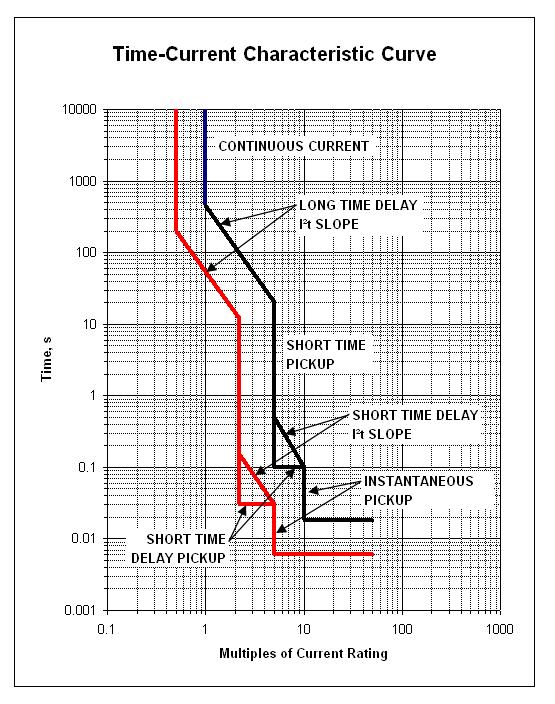
The basic adjustable functions are:
- Continuous Current (Ir)
- This is the magnitude of current that a circuit breaker can carry without tripping. Ir is a percentage of the circuit breaker nominal rating (In).
- Adjustment of this setting will vary the continuous current from about 20% to 100% of the circuit breaker nominal rating (In).
- Example:
In = 1000A
Adjusting the setting to 60% will make the maximum continuous current rating of the circuit breaker to
= (60% x 1000) = 600 A - Long Time Delay
- Long-time delay causes the breaker to wait a certain amount of time to allow temporary inrush currents, such as starting a motor, to flow without tripping.
- Usually, the time adjustment is on a multiple of the continuous current rating (Ir). A common multiple is 6xIr as most motors draw current six (6) times its full load current during starting. The setting depends on the motor driven load. The unit adjustment for this setting is seconds. The long-time delay effects the position of an I2t slope which means that lower levels of contiuous current setting will allow the circuit breaker to remain online for longer periods of time.
- Short Time Pickup
- Short-time pickup is used for discrimination or selective tripping. The short-time pickup function determines the amount of current the circuit breaker will carry for a short period of time, allowing downstream protective devices to clear short-circuits without tripping the upstream device.
- This setting could be adjustable from 1.5 to 10 times the trip unit continuous current setting (Ir). For example, a 1000 ampere frame can be adjusted to trip anywhere from 1500 to 10,000 amps.
- If this function is set to "off" position, the short-time pickup and short-time delay will be disabled.
- Short Time Delay
- Short-time delay, used in conjunction with short-time pickup, controls the time duration before a short-time pickup trip.
- There are two modes:
- Fixed time
A fixed instantaneous trip point, trips the breaker automatically and overrides any pre-programmed settings. - I2t ramp
The I2t ramp mode is adjustable providing a short inverse time ramp. This allows better coordination with downstream thermal-magnetic circuit breakers and fuses.
- Fixed time
- Instantaneous Pickup

- Instantaneous Pickup is used to trip the circuit breaker with no intentional delay at any current between 2 and 40 times the breaker's continuous ampere setting (Ir).
- Example:
Continuous Current Setting (Ir) = 60% x In = 600 A
Instantaneous pickup = 10 x Ir = 10 x 600 = 6000 A - A setting higher than the fixed instantaneous override will automatically trips the breaker at the fixed instantaneous override regardless of the instantaneous pickup setting.
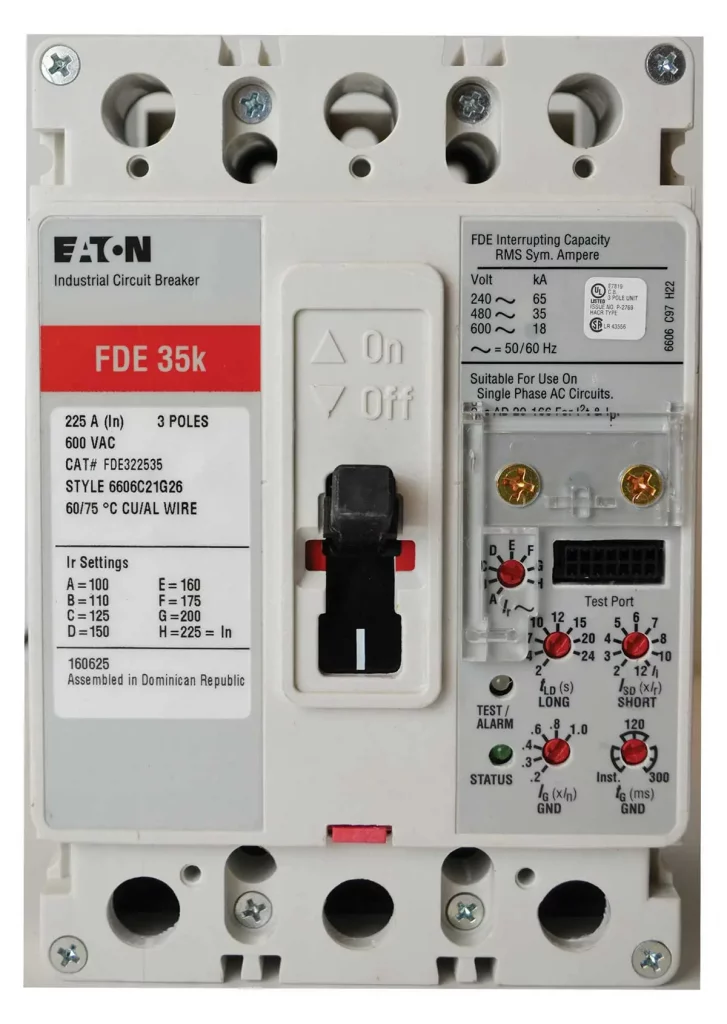
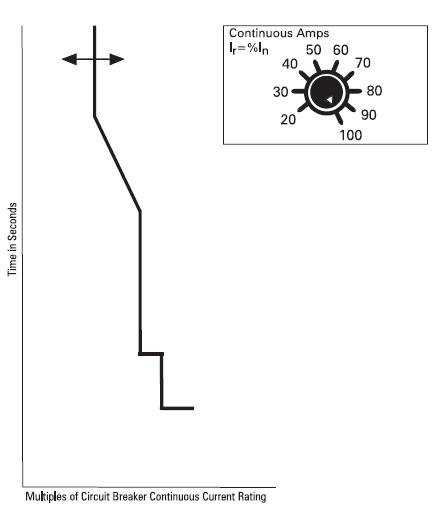
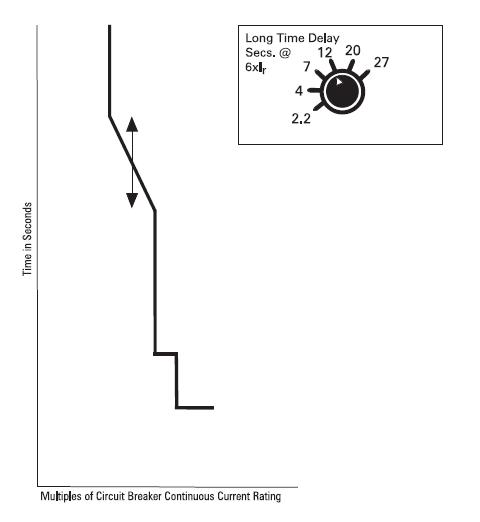
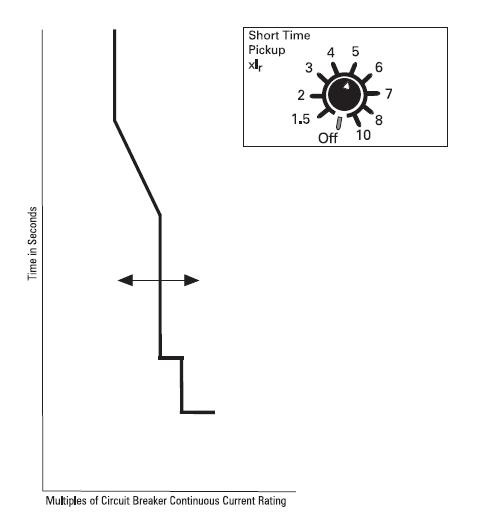
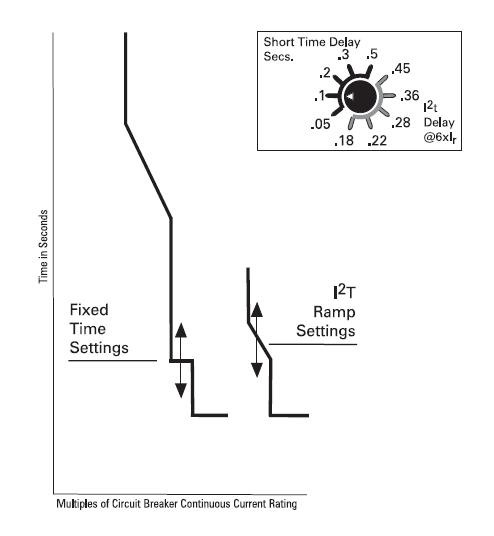
We have a test equipment for time-current characteristics measurement. Is this test mandatory for every breaker manufactured in Philippines? Many laboratories perform it, but do manufacturers only require type testing?
Hello, thank you for the post! its very useful!
I would like to ask you something…I am trying to the TCC curve with excel. I have from the manufacturer the following settings:
In=2500A ; long-time pickup= 0.8 ; long-time delay= 2 seconds.
Then, how could I make the curve for the overload protection? I need to figure out the ecuation I^2 * t, but I dont know how to do it…I miss some values…
Could you please help me?
Thank you very much in advance!
Thank, i was search this exact article, thanks again
Tal
its really comprehensive
hi sir, i just want to know the formula for the TCC of the long time delay and short time delay curve, I have the following settings of the breaker, 4000A, IN = 1.0 x INP
t = 4 s @ 6 x INP Instantaneous, N = 4 x INP, hope you could help, thanks in advance
There is no single formula in determining the TCC of a breaker. There are so many factors to consider. The easiest way (without the aid of computers) is to get a manufacturer TCC and plot your values in there.
An excellent example for trip curve setting, clear – broken down and not commercialised. A good reference for juniors, and a good reminder for everyone else.
we always use the Koten brand of circuit breakers at home and they are good”.-
thanks, for information…
it’s realy usefull for me…
Congratulations! This is very informative and clear.